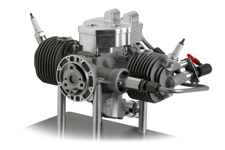Oct 18 2010
Ricardo has declared that its heavy-fuel Wolverine3 engine for powering Unmanned Air Vehicles (UAVs) has successfully accomplished its first in-flight tests at the Nevada National Security Site of the National Nuclear Security Administration. It is a two-stroke two-cylinder air-cooled engine featuring spark ignition and its power is 3.1-horsepower.
 Wolverine 3 UAV Engine
Wolverine 3 UAV Engine
In order to perform the initial flight of the UAV, the Wolverine3 was incorporated into a Nightwind 2 aircraft, a composite wing aircraft with 100% merged architecture and its wingspan measures 2m. It was developed by Unmanned Aerial Systems, Inc.
Kent Niederhofer, President of Ricardo, Inc has stated that premeditated Unmanned Air Vehicles are suitable for monitoring and missions involving intelligence-gathering. He said that their Wolverine3 has pioneered the tasks of UAVs in the war zone by resolving crucial issues involved in safety, consistency and logistics which are developed by the currently used engines powered by gasoline. He added that Wolverine3 is exclusively developed for lightweight premeditated UAVs like Nightwind series but it can also be employed in automated ground vehicles, supplementary power units and also for civilian segments including firefighting operations and frontal security.
According to Stephen Cakebread, Ricardo’s Project Director of Unmanned Systems, and Developer of Wolverine3, their research team had developed the archetype of the engine within a span of six months and it was ready for the first air travel within five months. Testing guiding to the first air flight featured lubrication system development, propeller drive, airframe to engine electrical interface, cooling duct optimization, electromagnetic interference (EMI) compliance, engine mount design, fuel delivery system development and calibration refinement.